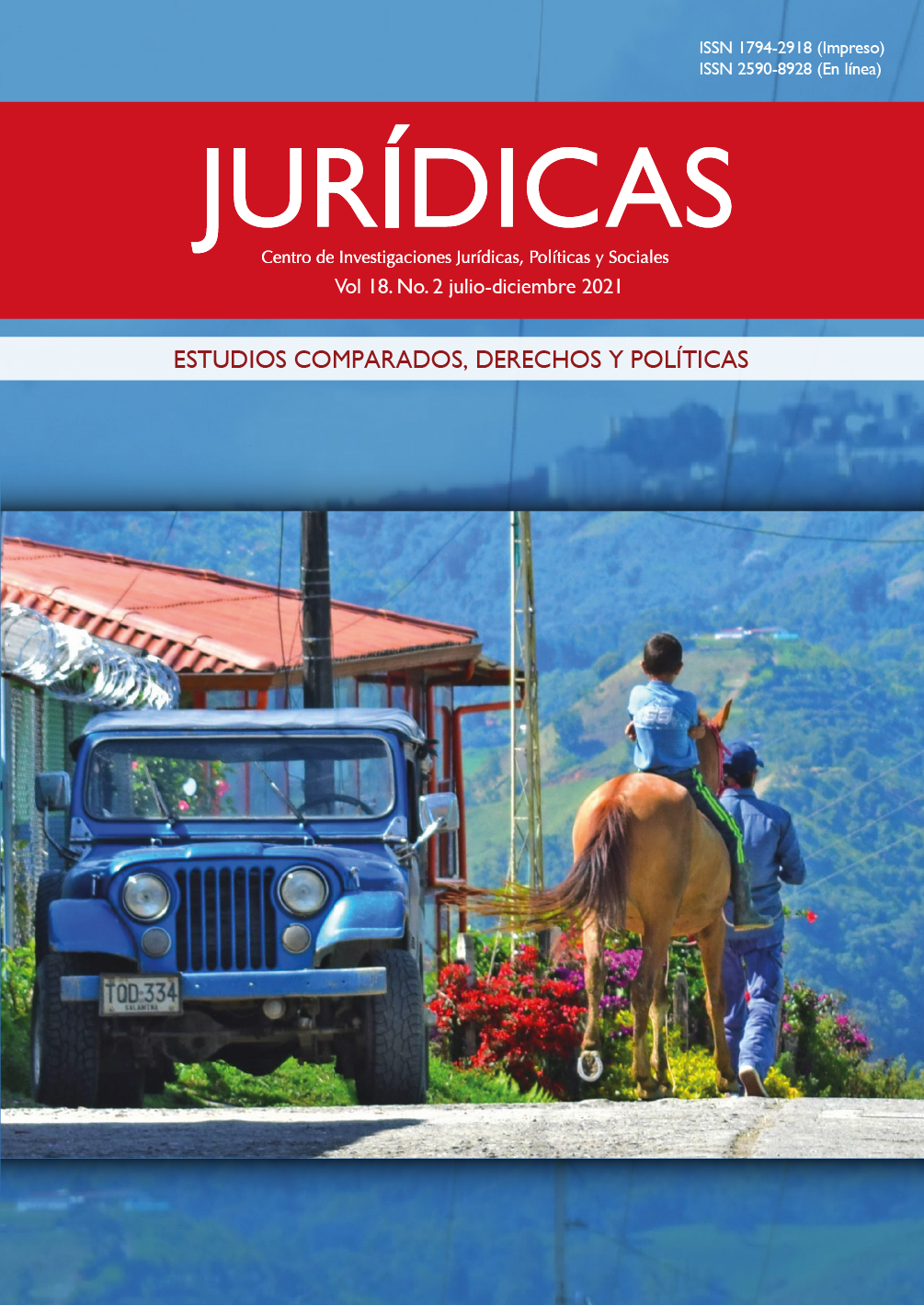Authors
Abstract
This article intends to establish the application of the normative, administrative and criminal anti-money laundering framework, having the Department of Tolima as a spatial framework and the 2005-2015 decade as a time frame. To this end, the qualitative methodology has been implemented on the regulatory information collected, as well as a mixture in relation to the other data from the Financial Information and Analysis Unit (UIAF for its acronym in Spanish), the National Department of Statistics (DANE for its acronym in Spanish) as well as the results of the field work conducted in the criminal jurisdiction of the region. The normative compilation of the most relevant administrative and criminal field in chronological order is counted as a result, descending in the current state under study. The information available on the number of suspicious transactions report (ROS for its acronym in
Spanish) 2014, in the financial and real sector by years is also recorded, without discrimination by Department due to the refusal of public entities to give access to these data, considering they are subject to reservation. Five processes of money laundering were found in the judicial sphere of the Department of Tolima during the period studied. Among the conclusions, it is proposed that, given the hypothesis of an inoperative regulatory framework to combat money laundering in the region, what the research reveals is the existence of a solid legal framework but, apparently, a scarce occurrence
of the criminal phenomenon. It is not possible to carry out studies that include more precise variables, unless the State entities offer more data by region, until now protected by legal reserve as argued.
Keywords:
Unidad de Información y Análisis Financiero
![]()
![]()
reporte de operaciones sospechosas
![]()
![]()
normas administrativas antilavado
![]()
![]()
procesos judiciales anti lavado
![]()
![]()
Financial Information and Analysis Unit
![]()
![]()
Suspicious Transaction Reports
![]()
![]()
anti-money laundering administrative regulations
![]()
![]()
References
Blanco-Cordero, I. (1997). El delito de blanqueo de capitales. Aranzadi.
Botero, A. M. (1989). Colombia ante la Convención de Viena: ¿Laberinto jurídico o encrucijada política? Colombia Internacional, (7), 3-8
Cabanellas de Torres, G. (1993). Diccionario jurídico elemental. Undécima edición. http://www.pensamientopenal.com.ar/system/files/2015/01/doctrina34261.pdf
Camargo, P.P. (2008). Manual de enjuiciamiento penal colombiano. Editorial Leyer. Comunidad de Madrid y Fondo Social Europeo. (s. f.). Definición y conceptos básicos de contabilidad. http://www.madrid.org/cs/StaticFiles/Emprendedores/GuiaEmprendedor/tema8/F50_8.1_CONCEPTOS_BASICOS.pdf
Fabián-Caparrós, E. A. (1998). El delito de blanqueo de capitales. Colex. Gaceta del Congreso 284. (1996). Proyecto de Ley S-18. Bogotá.
Hernández-Quintero, H. (2011). Los delitos económicos en la actividad financiera (6.a ed.). Grupo Editorial Ibáñez.
Hernández-Quintero, H. (2014). La responsabilidad penal de los funcionarios del sector financiero por el lavado de activos, especial referencia a la omisión de control. Universidad Externado de Colombia.
Hernández-Quintero, H. (2017). El lavado de activos (4ta ed.). Grupo Editorial Ibáñez.
Hernández-Quintero, H. (2018). Los delitos económicos en la actividad financiera (8.a ed.). Grupo Editorial Ibáñez.
Martínez-Sánchez, W. A., Pardo-Torres, P. F. y Vera López, O. A. (2014). Estudio de sentencias sobre lavado de activos proferidas entre los años 2005 y 2013. En W. A. Martínez Sánchez (ed.), Síntesis y reflexiones sobre el sistema antilavado de activos y contra la financiación del terrorismo en Colombia (pp. 67-95). Universidad del Rosario, UIAF.
Organización de las Naciones Unidas (ONU). (10 de julio de 1988). Convención de las Naciones Unidas Contra el Tráfico Ilícito e Estupefacientes y Sustancias Psicotrópicas. https://www.unodc.org/pdf/convention_1988_es.pdf
Ruiz, C. E., Vargas, R., Castillo, L. y Cardona, D. E. (2015). El lavado de activos en Colombia. Universidad Externado de Colombia.
Saavedra, E. y Del Olmo, R. (1991). La Convención de Viena y el narcotráfico. Temis. Unidad de Información y Análisis Financiero (UIAF). (2010). Informe de gestión 2010. UIAF. https://www.uiaf.gov.co/recursos_user///Informes_Gestion/Informe%20de%20Gestion%202010.pdf
Unidad de Información y Análisis Financiero (UIAF). (2015). Informe de gestión de octubre 2013 - octubre 2014. UIAF. https://www.uiaf.gov.co/recursos_user///2015/DIR/Informe%20de%20gestion%20octubre2013%20-%20octubre2014.pdf
Unidad de Información y Análisis Financiero (UIAF). (2016). Informe de gestión: octubre 2014 - octubre 2015. UIAF. https://www.uiaf.gov.co//recursos_user///2016/Informe%20de%20gestion%20UIAF%202014-2015.pdf
Vargas-Mendoza, L. M (2018) Armonización del delito de lavado de activos en los países de la Alianza del Pacífico. Universidad de los Andes.
Vargas-Sanmiguel, C. (2017). La Carga dinámica de la prueba en el proceso penal: un estudio a través del delito de lavado de activos (tesis de maestría). Universidad Externado de Colombia, Bogotá, Colombia.

 PDF (Español)
PDF (Español)
 FLIP
FLIP
 Perfil Google Scholar
Perfil Google Scholar





















